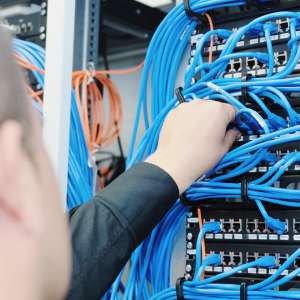Since the year 2000, the growth of the internet has also led to a growth in the need for data storage and distribution. As more businesses and organizations move toward cloud-based solutions for their data needs, the pressure on data centers will continue to increase. The advent of AI and data-driven IoT devices will also add to the need for data storage. People take for granted that they will have easy access to their data, but they do not consider the environmental costs of running data centers.
How much power does a data center use?
In 2014, the year of the last study by the federal government, data centers in the United States used more than 70 billion kilowatt-hours of electricity. That number represented about 2% of the country’s annual electricity usage. At that time, the researchers predicted that energy use by data centers would grow at a rate of 4% each year from 2014 to 2020. This data set only represents U.S. usage, and the global numbers of data center power usage are much larger.
Inefficient Design Issues
Part of the reason that data centers consume as much power as they do is an inefficient and outdated design plan. Many of these centers started when demand for server space was relatively low. With the fast pace of data storage needs, they simply added more servers to a facility designed for only a few.
Older data centers use standard commercial HVAC equipment to handle climate control issues in the facility. Racks of servers generate a great deal of heat and must be cooled to prevent breakdowns and interruptions in service. In an older setup, the cold air pumped in by the air conditioner mixes with the hot air produced by the computer equipment. This means that the air conditioning system must work even harder to keep things cool.
If are wondering, “How much power does a data center use?”, you also need to look at the location. If the natural temperature outside the center is always warm, it will take more energy to keep the equipment properly cooled. The issue of data centers in warmer locations will become even greater as global temperatures rise.
How much power does a data center consume at Elm Data Center?
Located in downtown Buffalo, New York, Elm Data Center can show you what happens when you plan a data center with energy efficiency in mind. We recognize that the need for data storage will continue to increase, and we think we are model for lowering the energy cost.
Using Existing Resources
New construction has a high environmental cost in both the use of resources and additional emissions. Our facility in downtown Buffalo uses an existing building as a data center. Not only does this prevent urban sprawl, but it also gives a boost to the local economy.
Environmentally-Friendly Infrastructure
We designed our facility to minimize its environmental impact while giving our customers high-quality climate monitoring information. By keeping a careful eye on factors like temperature and humidity, we can maximize performance while lowering cost. In case of a power emergency, our backup generator runs on clean, natural gas and our UPS flywheel system runs at 97% efficiency.
Cold Aisle Containment
We use a cold aisle containment system to make the most efficient use of cold air. By sealing off each server aisle, the cooling air does not mix with the warm exhaust. This allows for consistent temperature control that puts less strain on air-moving equipment.
The Efficiency of a Northern Climate
The average temperature in northern climates is cooler than much of the rest of the country. We can take advantage of that temperature difference and use fresh, outdoor air to cool our equipment. On the few days that Buffalo does get above 75 degrees, we have a backup cooling system in place. However, for most of the year, cool air is an abundant resource.
When you lower the environmental costs, you also lower the cost of operation. At Elm Data Center, we are able to pass those savings on in lower rates for colocation and hosting services. Contact us today to learn how we can help your business.
